How can I put the value over the bars when creating many plots with a loop.
The code I am using
years = [twenty,twentyone,twentytwo,twentythree]
for year in years:
plt.ylim(0, 60)
ax = sns.barplot(data=year, errorbar=None)
ax.set_xticklabels(ax.get_xticklabels(), rotation=45, horizontalalignment='right')
for i in ax.containers:
ax.bar_label(i,)
plt.xlabel('Type of error')
# Set plot title and save image
if year is twenty:
plt.title('2020')
plt.savefig(f'barplot_2020.png',bbox_inches="tight")
elif year is twentyone:
plt.title('2021')
plt.savefig(f'barplot_2021.png',bbox_inches="tight")
elif year is twentytwo:
plt.title('2022')
plt.savefig(f'barplot_2022.png',bbox_inches="tight")
elif year is twentythree:
plt.title('2023')
plt.savefig(f'barplot_2023.png',bbox_inches="tight")
#ax.bar_label(ax.containers[0],fmt="%.1f")
I have tried also to put some code in the ifs as shown in the last elif but the result is always the same as shown below.






